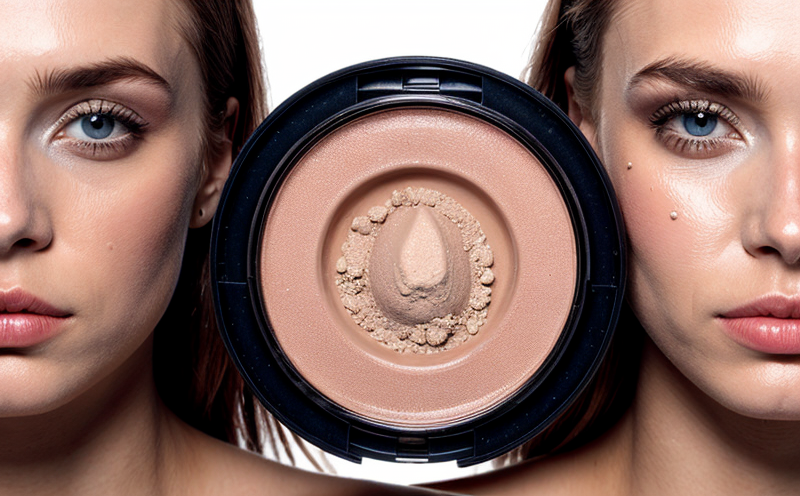Chromium Content Testing in Cosmetics
In today’s highly regulated and competitive market, ensuring product safety is paramount. Chromium content testing plays a critical role in safeguarding the health of consumers by identifying potentially harmful levels of chromium in cosmetic products. This form of testing is particularly important for those who are sensitive to heavy metals or have specific dietary needs.
Chromium, while essential in trace amounts for human nutrition, can pose significant risks when present at higher than permissible limits. The European Union’s Cosmetics Regulation (EC 1223/2009) and other international standards mandate that cosmetic products must not contain harmful levels of heavy metals like chromium. This regulation is designed to protect consumers from the adverse effects of exposure to these contaminants.
Chromium content testing in cosmetics involves a series of steps, including sample preparation, analysis using sophisticated instrumentation such as Inductively Coupled Plasma Mass Spectrometry (ICP-MS), and interpretation of results against established limits. The testing process must adhere strictly to recognized standards like ISO 17294:2013, which provides guidelines for the determination of trace elements in cosmetics.
During sample preparation, it is crucial to ensure that all potential sources of contamination are minimized. This includes using clean laboratory equipment and ensuring that the sample is representative of the product being analyzed. The selected analytical method should be validated to provide accurate and precise results, which is essential for regulatory compliance.
The selection of the appropriate reference materials (RMs) is also vital in this testing process. These RMs are used to calibrate the instrument and validate its accuracy. It is recommended to use certified standards that are widely recognized within the industry, such as those from NIST or IAEA, to ensure reliable results.
The analysis itself typically involves dissolving the sample in a suitable solvent, followed by a clean-up step using solid phase extraction (SPE) if necessary. The resulting solution is then injected into the ICP-MS instrument for quantification. The method used should be optimized to achieve the lowest detectable limit of chromium, ensuring that even trace amounts can be accurately detected.
The results are compared against the regulatory limits set by relevant standards and guidelines. For instance, in the EU, the maximum permissible concentration of total chromium in cosmetic products is 2 mg/kg for both hexavalent (Cr(VI)) and trivalent forms (Cr(III)). Compliance with these limits is mandatory to ensure that the product meets safety requirements.
| Element | Limit (mg/kg) |
|---|---|
| Hexavalent Chromium (Cr(VI)) | 2 mg/kg |
| Trivalent Chromium (Cr(III)) | 2 mg/kg |
Industry Applications
- Ensuring product safety and compliance with international standards.
- Meeting the stringent requirements of regulatory bodies like the European Union.
- Protecting consumer health by detecting potentially harmful levels of chromium.
- Safeguarding brand reputation through consistent quality assurance.
The demand for reliable chromium content testing is driven by increasing concerns about the safety of cosmetic products. Regulatory bodies worldwide are implementing stricter measures to protect consumers from the adverse effects of heavy metal exposure. This has led to a growing need for laboratories that can offer accurate and precise testing services.
Eurolab Advantages
As a leading laboratory in the field of cosmetic testing, Eurolab offers comprehensive chromium content testing services tailored to meet the highest industry standards. Our team of experts ensures that all tests are conducted with precision and accuracy, providing clients with reliable data that can be used for compliance purposes.
We offer several advantages over other laboratories, including:
- State-of-the-art facilities equipped with the latest technology for accurate analysis.
- A team of highly qualified and experienced professionals specializing in cosmetic testing.
- Dedicated support from our technical experts to guide clients through the entire testing process.
- Prompt and reliable turnaround times, ensuring that results are delivered when needed.
Use Cases and Application Examples
The application of chromium content testing in cosmetics extends beyond compliance with regulatory standards. It also plays a crucial role in product development, ensuring that new formulations meet the required safety levels before being launched on the market.
- Product Development: Ensuring that new cosmetic products do not exceed permissible limits of chromium.
- Quality Assurance: Regular testing to maintain consistent product quality and safety over time.
- Labeling Compliance: Providing accurate labeling information for consumers, ensuring transparency about the product’s composition.





